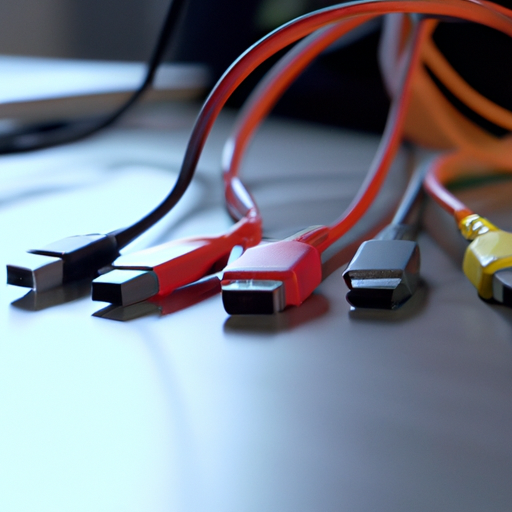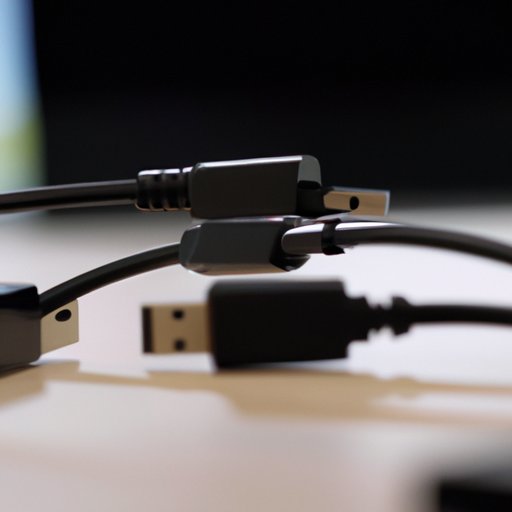Exploring the Pros and Cons of USB Extenders, Passive Cables, and Active Cables
When it comes to extending the reach of your USB connection, you have a few options. USB extenders, passive cables, and active cables are all viable solutions, but each has its own pros and cons. Let’s take a look at each one and see which one is right for you.
USB Extenders
USB extenders are a great way to extend the reach of your USB connection without sacrificing speed or quality. They use a combination of cables and repeaters to extend the range of your USB connection up to 150 feet. The main advantage of USB extenders is that they are easy to install and require no additional hardware. The downside is that they can be expensive and require a power source.
Passive Cables
Passive cables are a great way to extend the reach of your USB connection without sacrificing speed or quality. They use a combination of cables and connectors to extend the range of your USB connection up to 50 feet. The main advantage of passive cables is that they are relatively inexpensive and require no additional hardware. The downside is that they can be bulky and difficult to install.
Active Cables
Active cables are a great way to extend the reach of your USB connection without sacrificing speed or quality. They use a combination of cables and amplifiers to extend the range of your USB connection up to 100 feet. The main advantage of active cables is that they are relatively inexpensive and require no additional hardware. The downside is that they can be bulky and require a power source.
So, which one is right for you? It really depends on your needs. If you need to extend the reach of your USB connection up to 150 feet, then USB extenders are the way to go. If you need to extend the reach of your USB connection up to 50 feet, then passive cables are the way to go. And if you need to extend the reach of your USB connection up to 100 feet, then active cables are the way to go. No matter which one you choose, you can be sure that you’ll be able to extend the reach of your USB connection without sacrificing speed or quality.
Comparing the Cost and Performance of USB Extenders, Passive Cables, and Active Cables
When it comes to extending the reach of your USB connection, you have a few options. You can use USB extenders, passive cables, or active cables. Each of these solutions has its own advantages and disadvantages, so it’s important to understand the differences between them before making a decision.
USB extenders are the most expensive option, but they offer the best performance. They use a combination of hardware and software to extend the range of your USB connection. This means that you can connect devices that are up to 100 meters away from each other. The downside is that they require a power source, so you’ll need to make sure you have access to an outlet.
Passive cables are the most affordable option. They are simply cables that are designed to extend the reach of your USB connection. They don’t require any additional hardware or software, so they are easy to set up. However, they are limited in terms of range. Most passive cables can only extend the reach of your USB connection up to 15 meters.
Active cables are the middle ground between USB extenders and passive cables. They are more expensive than passive cables, but less expensive than USB extenders. They use a combination of hardware and software to extend the range of your USB connection up to 30 meters. They also require a power source, so you’ll need to make sure you have access to an outlet.
When it comes to cost and performance, it’s important to consider your needs before making a decision. USB extenders offer the best performance, but they are the most expensive option. Passive cables are the most affordable, but they are limited in terms of range. Active cables offer a good balance between cost and performance, but they still require a power source. Ultimately, the best solution for you will depend on your specific needs.
Understanding the Different Types of USB Extenders, Passive Cables, and Active Cables

Welcome to the world of USB extenders, passive cables, and active cables! Understanding the differences between these three types of cables can be confusing, but don’t worry – we’re here to help.
USB extenders are used to extend the length of a USB cable. They come in two types: active and passive. Active USB extenders use an active signal booster to extend the length of the cable, while passive USB extenders use a passive signal booster. Active USB extenders are more expensive than passive USB extenders, but they provide a better signal quality and longer cable length.
Passive cables are used to connect two USB devices together. They are usually shorter than active cables and don’t require any additional power. Passive cables are typically used for connecting two USB devices that are close together, such as a printer and a computer.
Active cables are used to connect two USB devices that are farther apart. They require an additional power source, such as a power adapter, to boost the signal. Active cables are typically used for connecting two USB devices that are farther apart, such as a printer and a laptop.
We hope this has helped you understand the differences between USB extenders, passive cables, and active cables. If you have any further questions, please don’t hesitate to reach out to us. We’re always happy to help!
Analyzing the Benefits of Using USB Extenders, Passive Cables, and Active Cables
When it comes to extending the reach of your USB devices, you have a few options. USB extenders, passive cables, and active cables are all viable solutions for extending the range of your USB devices. Let’s take a look at the benefits of each.
USB Extenders
USB extenders are a great way to extend the range of your USB devices. They use a combination of cables and repeaters to extend the range of your USB devices up to 150 feet. This makes them ideal for applications where you need to extend the range of your USB devices over a long distance.
Passive Cables
Passive cables are a great way to extend the range of your USB devices without the need for additional hardware. They use a combination of cables and connectors to extend the range of your USB devices up to 15 feet. This makes them ideal for applications where you need to extend the range of your USB devices over a short distance.
Active Cables
Active cables are a great way to extend the range of your USB devices without the need for additional hardware. They use a combination of cables and active electronics to extend the range of your USB devices up to 30 feet. This makes them ideal for applications where you need to extend the range of your USB devices over a medium distance.
No matter which option you choose, you can rest assured that you’ll be able to extend the range of your USB devices. USB extenders, passive cables, and active cables all offer their own unique benefits, so it’s important to consider your needs before making a decision.
Examining the Advantages and Disadvantages of USB Extenders, Passive Cables, and Active Cables
When it comes to extending the reach of your USB connection, there are a few different options available. USB extenders, passive cables, and active cables are all viable solutions, but each has its own advantages and disadvantages. Let’s take a look at each one and see which one is right for you.
USB Extenders
USB extenders are a great way to extend the reach of your USB connection without sacrificing speed or quality. They use a combination of cables and repeaters to extend the range of your USB connection up to 150 feet. The main advantage of USB extenders is that they are easy to install and require no additional hardware. The main disadvantage is that they can be expensive.
Passive Cables
Passive cables are a great way to extend the reach of your USB connection without sacrificing speed or quality. They use a combination of cables and connectors to extend the range of your USB connection up to 50 feet. The main advantage of passive cables is that they are relatively inexpensive. The main disadvantage is that they can be difficult to install and require additional hardware.
Active Cables
Active cables are a great way to extend the reach of your USB connection without sacrificing speed or quality. They use a combination of cables and amplifiers to extend the range of your USB connection up to 100 feet. The main advantage of active cables is that they are relatively easy to install and require no additional hardware. The main disadvantage is that they can be expensive.
In conclusion, each of these solutions has its own advantages and disadvantages. Depending on your needs, one of these solutions may be the right choice for you. Consider your budget, the distance you need to extend your USB connection, and the ease of installation before making your decision.
